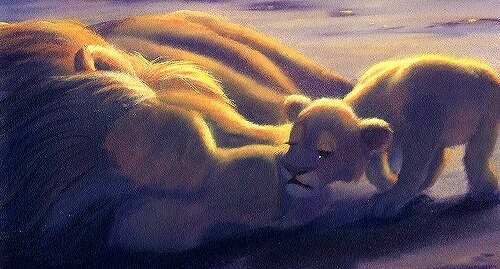
The connection between wolves and Viking warriors is further emphasized by the existence of Berserkers and Ulfhednar. They take the pelts and upon wearing them, turn into ravenous, ferocious wolves, hunting men in the forest for days. In the Völsunga Saga we hear how Sigmund and Sinfjofli, father and son, come across two men who were shape-shifters, sleeping under wolf-pelts. The prophecy said that one day Hati would devour the sun, signaling the beginning of Ragnarök.

Two other mythological wolves were Skóll and Hati, the wolves who chased Mani and Sol (respectively) across the sky. Additionally, wolves were linked to the monstrous wolf Fenrir, one of the most feared creatures in Norse mythology, known for its prophesied role in the destruction of the gods during Ragnarok. Their loyalty to Odin and their shared role in the battlefield underscored the bond between wolves and the divine. Wolves were associated with several significant mythological figures, most notably Odin and his wolves, Geri and Freki. Connection to Sagas and Mythological Figures As a result, warriors would often use wolf symbolism to emphasize their own strength and courage in battle. Their prowess as hunters and their fierce nature made them a fitting representation of the warrior spirit that Vikings admired. Wolves were seen as symbols of strength and ferocity in the Viking Age. They were regarded with a combination of fear, respect, and fascination due to their status as predators, their pack mentality, and their connection to various mythological figures. Lorenz Frølich, Public domain, via Wikimedia Commonsĭuring the Viking Age, wolves played a significant role in Norse mythology and culture. As such they are likely yearning to roam the battlefield feeding on the newly dead, much like their raven friends Huginn and Muninn. In Old Norse, it also means “greedy, or gluttonous.” This term is also attested in other languages, such as Old English frec for “desirous, greedy, gluttonous, audacious,” and Old High German freh, which also means “greedy.”īoth their names attest to how they are seen as ferocious and greedy predators. The name Geri ( Gera in the original Grímnismál), in Old Norse, translates to “the greedy one” or “the ravenous one.” It originates from the Proto-Germanic adjective *geraz, which means “greedy” and can be found in various forms such as Old Norse gerr, Old High German ger or giri, and Old Dutch gir.įreki ( Freka in Grímnismál), on the other hand, is derived from the Proto-Germanic adjective *frekaz. Considering this I think the fact that we don’t know much about his wolves is likely due to their story being lost, rather than there never being one. However, I do believe that if Huginn and Muninn are to be seen as fylgjur, or spirit animal extensions of Odin, there is no reason why Geri and Freki didn’t play the same part.Īlmost every animal, artifact and god in Norse mythology has a rich backstory.

While the ravens are mentioned now and then in the sagas, less is known about the wolves. Carl Emil Doepler (1824-1905), Public domain, via Wikimedia Commons


 0 kommentar(er)
0 kommentar(er)
